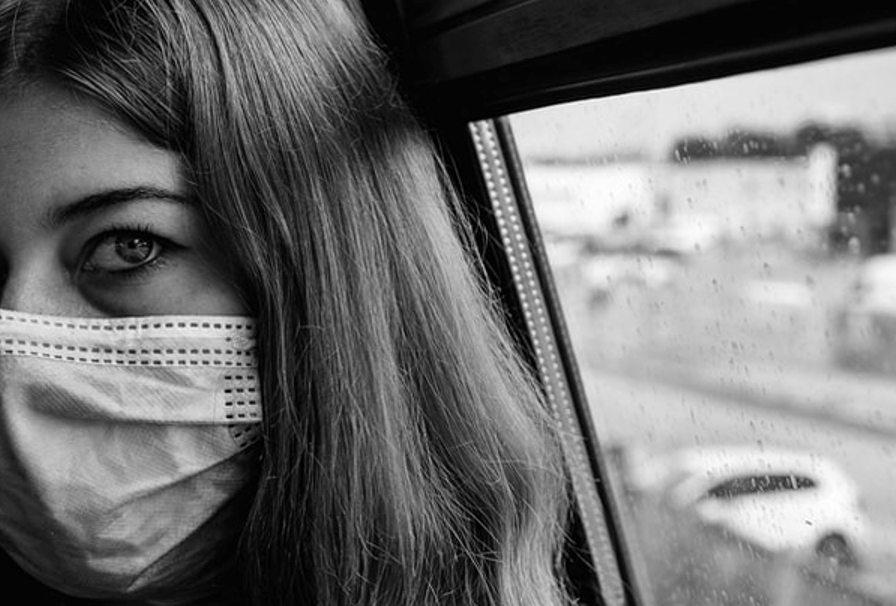Another day, and yet another report has been published outlining just how much we are struggling with our collective mental health.
The science is clear: 2020 has tested, and depleted, our emotional fortitude like no other year.
As a species, it appears we’ve never been so lonely, so stressed, and simply so sad as we currently are. Can we do anything to alleviate all that?
In the long-term, we’re going to need a mental health revolution. Our existing systems of care are now stretched to the breaking point and need a major overhaul. They were already unfit for purpose; COVID-19 has only accentuated just how abject they were.
That will be a huge undertaking; given that our current levels of happiness, and motivation, are at an all-time low, I’ll understand if you’re not feeling up for tacking something that big today.
And, given that help is unlikely to come from outside sources, is there anything we can do—by ourselves—that could aid our general mood and well-being today, right here, right now?
Happily, yes. Yes, there is.
I’m going to be simplifying neuroscience massively now, but happiness is essentially a physical, chemical reaction, and it occurs when our brains generate any one (or a combination) of four specific chemicals.
Collectively, they’re known as “D.O.S.E”—dopamine, oxytocin, serotonin, and endorphins. More colloquially, they’re known as the “feel good” chemicals.
When we’re feeling “okay,” our brains are able to produce these chemicals naturally.
When we’re not (for example, when we find ourselves in the middle of a global pandemic, caught up in the turmoil of political unrest, and facing economic ruin), they don’t. At times like this, our minds are just focused on helping us to survive, to endure—joy can come later.
However, there are many things we can do to incite those reactions. We can, artificially, make our brains create those chemicals. And, although we might have tricked our minds into performing those chemical reactions, the end result is the same: a little burst of happiness.
So, let’s look at each of those four chemicals, and explore what we can do to prod them into existence.
Dopamine.
Dopamine produces a short-lived feeling of joy that—although only fleeting—motivates our mind and body toward achieving a goal: that tiny burst of happiness makes us crave more of the same, and on a prolonged basis. It’s also vital in fostering our level of concentration, something that will inevitably wax and wane given the turmoil out in the wider world.
How can we create it?
1. Get lots of sleep.
An obvious place to start, but there’s a reason for that; sleep is not only central to good mental well-being, it’s also crucial to the creation of dopamine.
Our biological, circadian rhythms means that dopamine is, naturally, released in large quantities in the morning, and drops in the evening when it’s time to go to sleep. But, a poor sleeping pattern disrupts these rhythms, and leads to an inconsistent supply of dopamine being generated, which leads to irritability and lower levels of concentration.
Regular, high-quality sleep will keep your dopamine levels balanced. And the key to this is “sleep hygiene”—going to bed and waking at the same time each day; avoiding the use of technology an hour before bedtime; reducing noise and lights sources in your bedroom; and avoiding caffeine in the evening.
Sleep is often the first thing that is affected by poor mental health, and it’s unquestionably one of the hardest aspects to improve. But, the effort is worth it. Good sleep = more dopamine = more happiness.
If you’re looking to be happier, sleep is the first place you have to start.
2. Listen to music.
We all know that music can affect our mood, and the science backs this up: a range of studies have shown that music can actually stimulate the release of dopamine. However, instrumental music works best. In particular, classical. So, jump on Spotify, and start downloading Mozart, Bach, and the gang—it will (literally) make you happier.
3. Eat protein.
Proteins are made up of amino acids, one of which—tyrosine—plays a critical role in the production of dopamine. Tyrosine is naturally found in soy, dairy, beef, turkey, eggs, and legumes. The good news is that any (or all) of these items can be incorporated in to a healthy diet with no negative effects on weight, body fat, or blood sugar levels. Time to pop to the supermarket, people!
Next up…
Oxytocin.
This is the chemical that improves, and strengthens, our bond with others. It’s first released during childbirth, and plays a huge role in developing the bond between parent and infant, and then—later—when we physically connect with others. How can we manufacture it?
4. Hug someone.
There’s a reason why oxytocin is called “the hugging drug,” or the “the cuddle hormone”—it’s during those activities that it is released. So, if you can, give your loved ones a hug. A random, sneak-attack one if you must. You’ll both benefit from it (even if they do look at you as if you are a bit weird).
5. Meditate.
Let’s be honest—we should all be meditating anyway. Meditation has been proven to lower anxiety, and stress—it needs to be a vital part of your well-being armory regardless.
But, certain types of meditation can, specifically, aid in the creation of oxytocin. A “Compassion (or “Loving-Kindness”) Meditation,” where you focus on your thoughts on someone you care about, sending them love, goodwill, and a wish for wellness, will boost your levels of oxytocin even if you can’t physically touch them.
Love can be done remotely. And the good thing for you is that, even if done so via mediation, it’ll still make you happier. So, let’s get on it, and start flooding the ether with positive vibrations!
6. Do something nice for someone.
Wonderfully, random acts of kindness won’t just make someone else happier, they’ll also produce oxytocin in your brain, and make you feel happier too. Reach out to someone you haven’t spoken to in a long time to check that they’re okay; offer to help an elderly neighbor with their shopping; send a card or letter to a close friend telling them how great they are; promote a cause or charity that means something to you on your social media.
Do it—it’ll make you happier!
Next!
Serotonin.
This is the less cuddly version of dopamine, and is generated when we feel a sense of accomplishment, or recognition, from others. Like dopamine, although its effects are short-lived, it’s another motivating chemical; we want to experience more of it, so we are compelled to do well in life, to try and achieve. If we do, we get more serotonin. Result! But how?
7. A to-do list.
Serotonin likes accomplishment—it thrives when we achieve something. So, achieve something! Create an achievable “to-do” list, say, 10 items. Don’t be unrealistic—remember, you need to be able to complete it. Every time you complete a task, savor the feeling of ticking it off. It’s a cheap trick, but your brain will still be fooled, and give you a little dose of serotonin.
8. Let there be light!
Exposure to light affects serotonin levels, which is why Seasonal Affective Disorder (SAD) is so rife in the winter months when daylight is at a premium. The are two ways around this.
Firstly, when the sun does make a brief appearance during these (literally) darkened times, put your shoes on, and go for a walk. Just 10 minutes strolling in the sun will do wonders. The second way is more expensive, but is remarkably effective: purchase a light box.
These come in a variety of designs, including desk lamps and wall-mounted fixtures, and produce a bright light that simulates the sunlight that’s missing during the darker winter months.
No, these are not cheap—but they work.
9. Gobble down your Vitamin B6.
More food! Vitamin B6 is key in the conversion of amino acids in to serotonin. Sadly, the human body cannot produce B6 by itself—it needs a helping hand. And that can be found in cabbage, green beans, lentils, avocados, and fish. So, cross out the comfort food you’ve got written on your shopping list, and replace those items rich in Vitamin B6; your serotonin levels will thank you.
And, so we reach the final member of the quartet…
Endorphins.
Biologically, endorphins are released in response to pain. They help us push our bodies beyond their comfort levels, and keep going when we might otherwise want to throw in the towel. However, you don’t have to be experiencing a vast amount of pain for endorphins to be released. A strenuous workout will cause your body, and all its muscles, just enough “pain” for this chemical reaction to occur. That “high” you get after leaving the gym? That’s the endorphins buzzing around inside of you.
So how (I hear you ask) can we create more of this magical chemical?
10. Exercise (obviously).
Anything will do. A brisk walk, or a demanding two-hour session pushing weights. It doesn’t matter. Just get your heart rate up, and the endorphins will appear. It’s just what they do.
11. Eat dark chocolate.
Yes—really. Dark chocolate is actually good for you (well, in moderation of course). It is crammed full of positive nutrients, and is one of the best sources of antioxidants around. It’ll also help stimulate the creation of endorphins, so you can enjoy a few chunks completely guilt-free.
12. Take a bath.
The anecdotal benefits of having a bath in the name of relaxation are legion. However, the science backs it up; the heat of the water can trigger the release of endorphins into your blood.
So, after a long day that’s involved a bit of exercising, doing something kind for another person, mediating, completing your to-do list, and eating lots of “D.O.S.E”-rich foods, pour yourself a deep, hot bath, put some classical music on, and nibble on some dark chocolate.
You will be (biologically) happier for it.
So, that’s it—12 ways to be happier today, a mental health first aid kit for these challenging times. Give yourself some self-care, and see if you can create an extra “D.O.S.E” of happiness. You deserve it.












Read 5 comments and reply